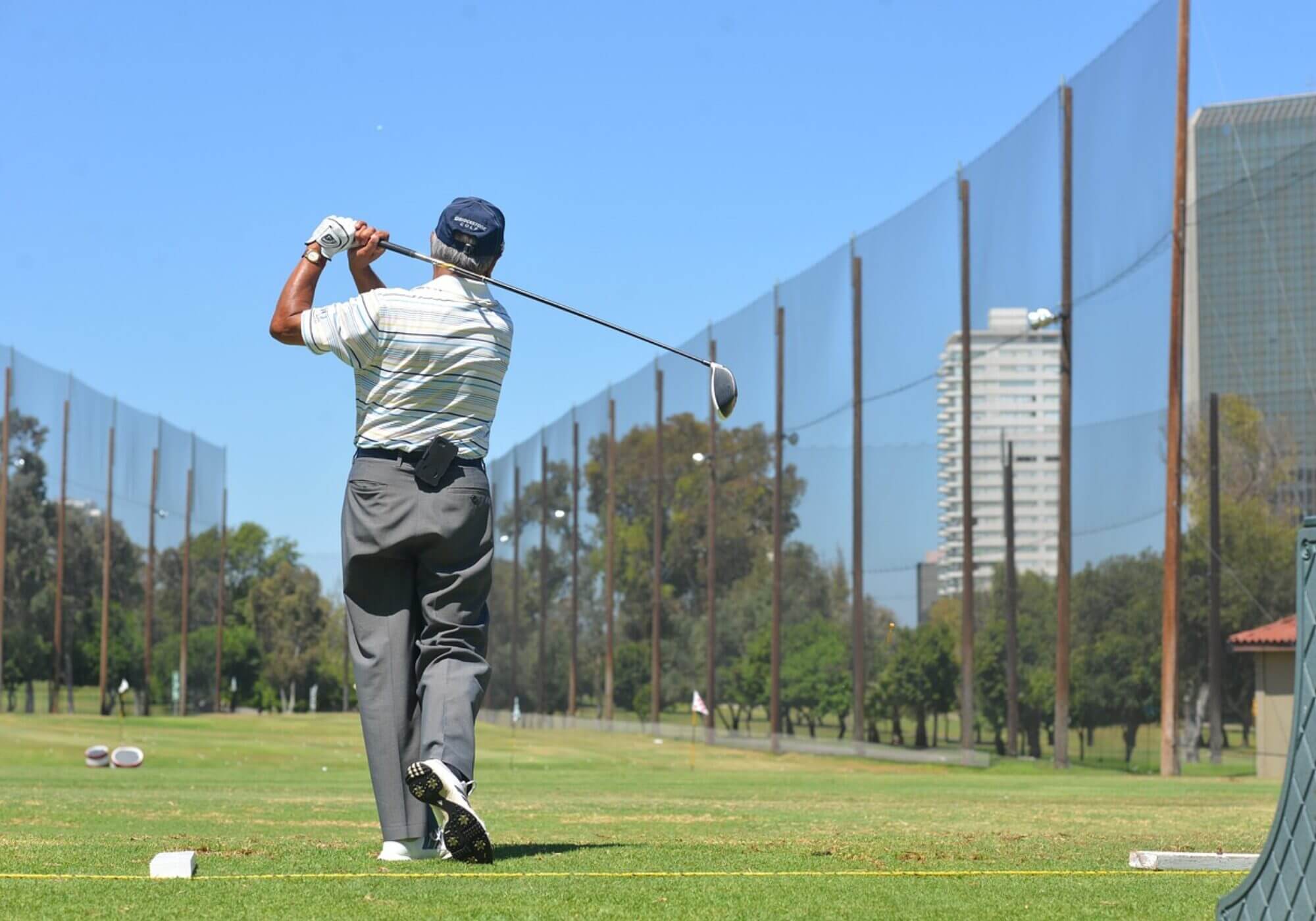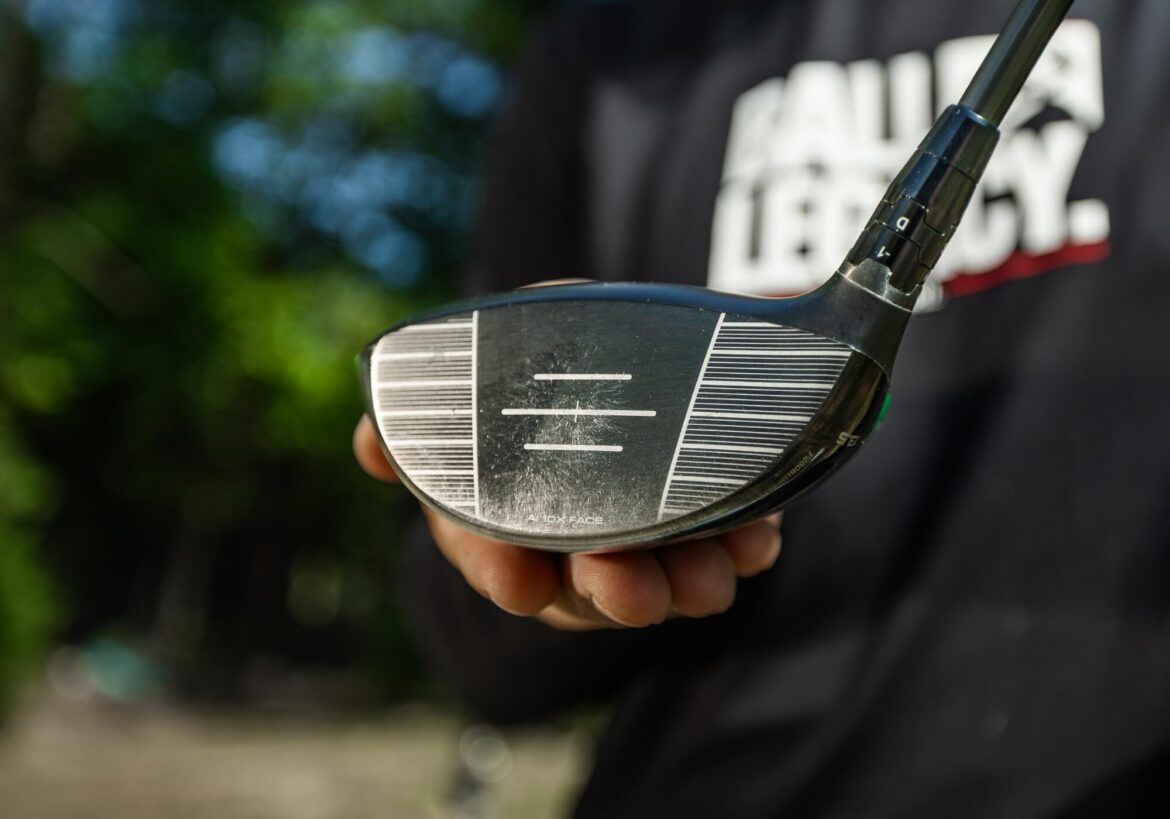Your drive started right and stayed right … yet again. You swore you’d swing through squarely this time, but the ball knifed into the trees. Why? You left the face open because you don’t trust the release and your hands know it.
An open clubface at impact is one of golf’s most expensive driving mistakes. It costs you the fairway you missed and the distance you left behind. When you understand why it happens, you’ll start seeing drives split the fairway rather than land in the rough and trees.
Why an open face is worse than a closed one
When you hit a drive with a closed face, at least you got the ball moving. You make contact, generate speed, and the ball goes somewhere with energy. You have some distance, even if the direction was off.
Leave the face open and you lose everything. The ball leaks right with a weak fade, sacrificing significant distance. Many golfers play so defensively through impact that they’ll never know what a fully released driver feels like.
Tour players rarely slice. Their misses stay controlled, usually as pushes or slight fades. Amateurs slice constantly and that is no coincidence.
The real reason you leave the face open
You don’t trust the release.
You start your backswing, build your coil and intellectually understand your hands need to rotate through impact. But, coming into the ball, that feels reckless. Like you’re going to snap-hook it into the adjacent fairway.
So you hold on. You keep the face stable through impact, preventing the natural rotation because it feels safe and controlled.
Wrong thought pattern all the way around. You’ve just guaranteed an open face and a weak slice.
Pattern 1: Good setup, blocking at impact
You’ve got everything right at address: square clubface, proper grip, balanced stance. Then, through impact, your hands freeze and hold the face open.
The cause: Fear of the left side. You’re terrified of a hook so your hands refuse to rotate. Your body slides past the ball while your arms and club lag behind. This gets worse with the driver because the longer shaft amplifies the face angle. A slightly open face becomes a disappointing slice.
The fix: Practice release drills without a ball. Make half-speed swings where you consciously rotate your right forearm over your left through the hitting zone. The logo on your glove should face the ground after impact, not the target.
This feels wildly aggressive at first, like you’re flipping at it but in this exercise, that’s the correct feeling. It is one of those “feel” versus “real” scenarios.
During warmup, hit a bucket of balls with your driver but only at 60 percent speed, focusing on seeing your right hand finish over your left. Speed comes later. Release comes first.
Pattern 2: Weak grip forcing compensation
Your grip is too neutral or weak, requiring perfect timing to square the face up at impact. Under pressure, that timing disappears and the open face returns.
The cause: You see one knuckle, or no knuckles, on your left hand at address. A weak grip requires massive hand rotation to square the face. That’s a timing move you won’t repeat under pressure. This pattern often develops because someone once told you a strong grip causes hooks.
The fix: Gradually strengthen your grip. Rotate your left hand clockwise until you see two or three knuckles at address. Your right hand should sit more underneath the grip, not on top.
Yes, your first few drives might go left. That’s your body learning to trust that the face will square itself. Give it 20 swings and you will start to feel more comfortable with this change.
A stronger grip does the squaring work for you, turning an open face from a guarantee into an impossibility.
Pattern 3: Sliding instead of rotating
You think you’re rotating through the ball. However, you’re actually sliding your hips toward the target while your upper body hangs back so the club arrives late at impact with an open face. This is a common trait I see among students.
The cause: You’re using lateral movement instead of rotational speed. Your hips slide forward but your chest never turns through. The club can’t catch up so it reaches impact still pointing right of target.
The fix: Feel like you’re hitting against a firm left side. Your left hip should rotate backward and up through impact, not slide toward the target.
Practice this with your feet together. Make full swings with your feet touching. You’ll be forced to rotate instead of slide because there’s no room for lateral movement. This drill reveals what real rotation feels like.

The face-square drill
Tee up a ball and grip down two inches on your driver. Make smooth 70-percent swings, focusing on rotating the clubface closed through impact. Hit 10 balls.
Some will draw more than you want. That’s the point of this drill. It means you’re finally releasing the club.
Your goal isn’t to hit every drive straight. It’s to eliminate the open-face slice. Once you’re comfortable releasing fully, you can moderate it slightly if needed. But most golfers need to rotate 30 percent more than they currently do, not less.
Stop steering the face square. Trust the release, strengthen your grip and let your body rotate through. The fairway is wider than you think when you square the face.
The post Why You Can’t Square The Driver Face Consistently (And How To Fix it) appeared first on MyGolfSpy.
